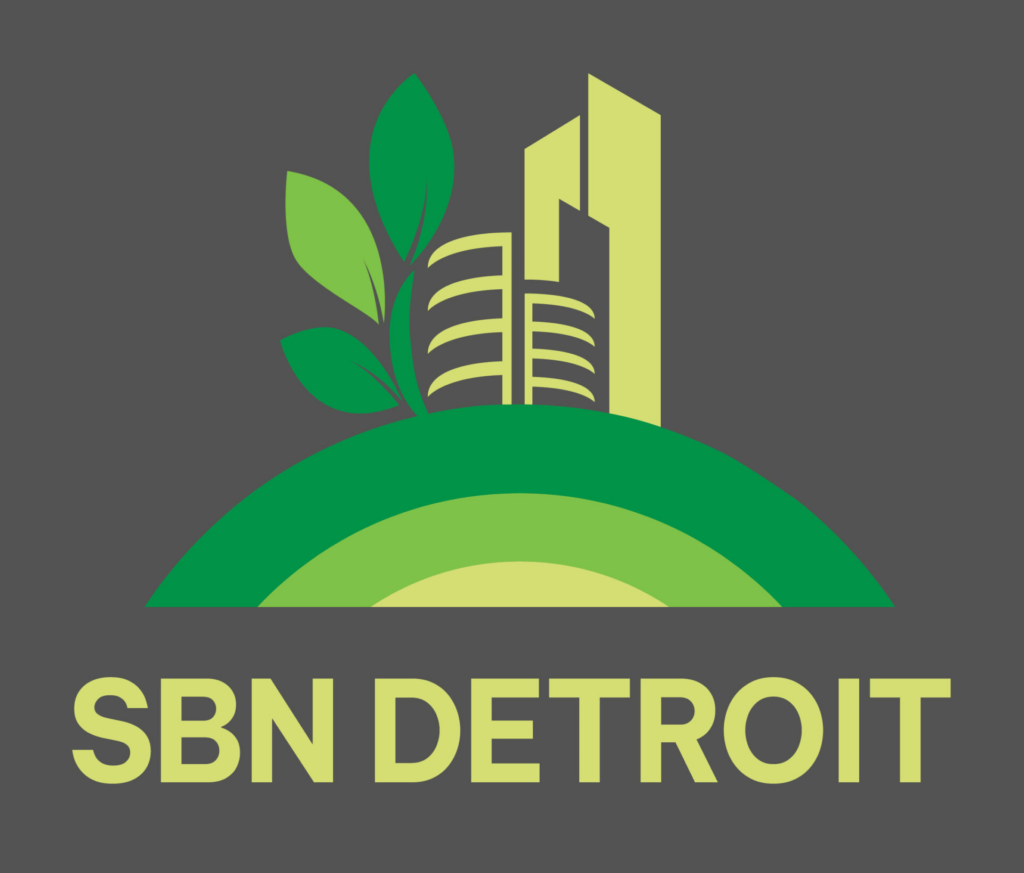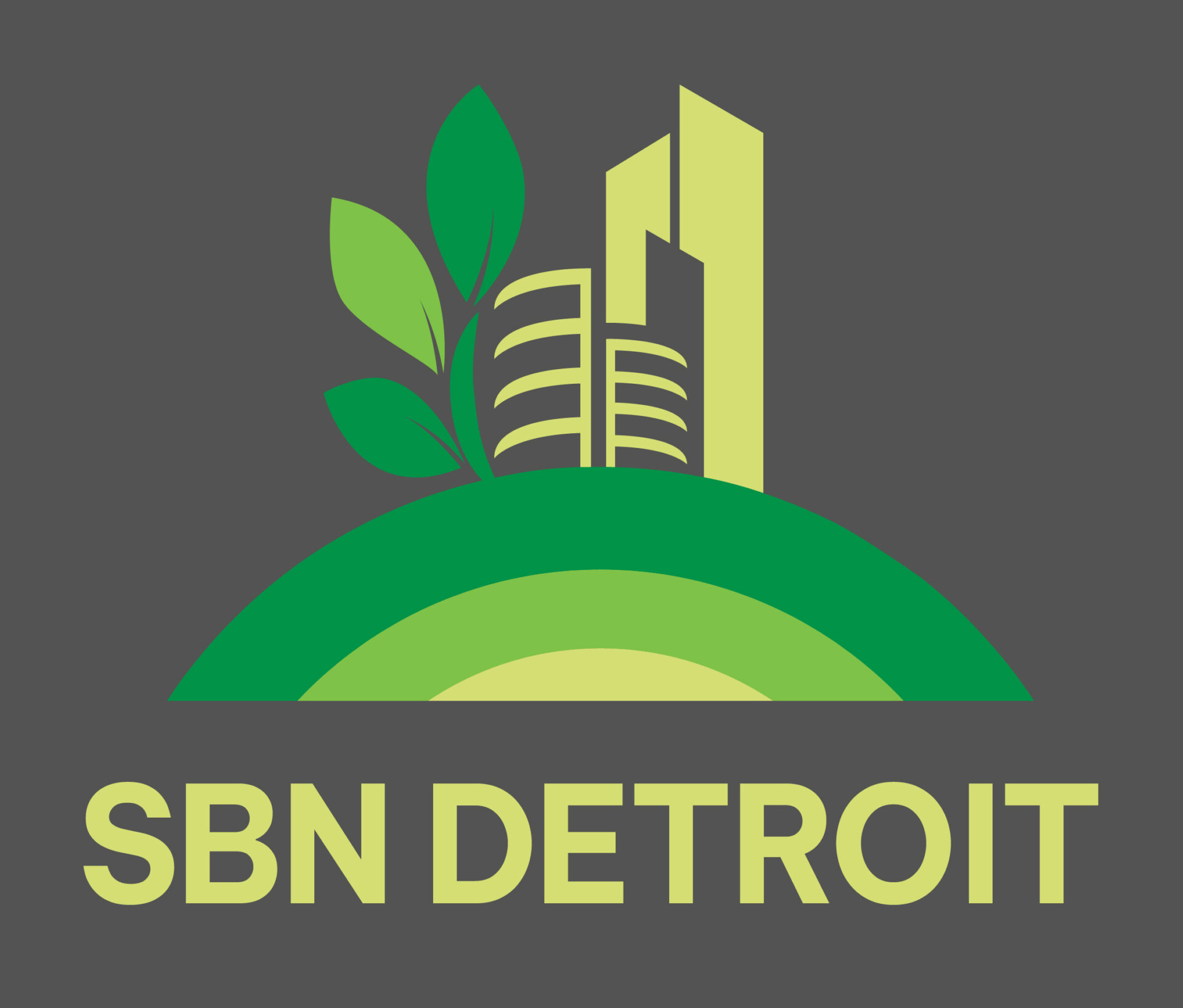Recycling Rates in Michigan Are At an All-Time High

According to a recent press conference from the Michigan Department of Environment, Great Lakes, and Energy (EGLE), recycling in the Great Lakes Region is now at an all-time high. The total amount of residential recycled materials being reported for fiscal year (FY) 2022 was 620,494 tons – that’s over 66,000 tons more than the previous new record set the year prior. Materials Michiganders recycled last year would fill the football stadiums at Ford Field, Michigan State University’s Spartan Stadium, and the Big House at the University of Michigan. Michiganders recycled over 339,000 tons of paper and paper products during FY 2022, more than 154,000 tons of metals, more than 71,000 tons of glass, and over 45,000 tons of plastics and plastic products. SBN Detroit spoke to the executive director of the Michigan Recycling Coalition, Kerrin O’Brien, and executive director of Green Living Science, Natalie Jakub to get their unique perspectives on how the state got here and how businesses in Southeast Michigan are participating. Q: Recycling rates in Michigan are now at an all-time high. How did we get here? O’Brien: There is a history of recycling in Michigan communities. Those communities that made recycling a priority began to develop their own programs. With advocacy through the Michigan Recycling Coalition, we started to see state-level leadership around 2014. Then Governor Rick Snyder saw the value of recycling and productive materials management and funded four additional recycling technical assistance staffers. The state department also began working with stakeholders to identify the level of funding needed to support a robust recycling program in the state. Funding for recycling was passed in 2018 which supports community grants for infrastructure and market development which are needed to grow recycling in Michigan. Q: How do you think education has impacted the increase in recycling? Jakub: Green Living Science works a lot with youth and in schools and one of the things we continue to hear is that families will often begin recycling because their children have learned about it and want to institute it in their homes. So, more education at a young age is a natural part of this behavior. The more conversations we have about the impact that waste has on our lives, people start to understand. The simpler we can make the education and the actual act of recycling we will see more people willing to participate. The city of Detroit has a 40% recycling participation is a huge jump from 11% a decade ago, so people and businesses are learning and largely eager to support. Q: How does Green Living Science work with businesses in Southeast Michigan regarding recycling practices? Jakub: GLS began in 2011 with a focus on education in the schools but over the years we started to see a great need for local businesses to get support setting up programs. Many businesses don’t have a dedicated staff person so it’s typically an administrator now tasked with everything that is involved with recycling – which can be a lot. We developed a program called Bee Green Business to make it easy for businesses that includes setting up infrastructure, bins, signage, and education. Bee Green Business is an education and certification program that aids businesses and their employees in becoming responsible corporate citizens. This program has been successful from small independent brands like 14 East Café and Red Crown restaurant to large institutions like Henry Ford Health, Ally Financial the DIA, and more. A challenge we commonly see in commercial facilities is that they weren’t designed for more than one waste stream, so there are challenges with space issues and infrastructure needed to make the programs run smoothly and efficiently. Many haulers only offer dumpsters for recycling and we’ve learned that there’s a great need for cart programs. Something mobile that can be moved from an office to a loading dock and dumped. Q: How can we and are we bringing more businesses into our recycling efforts? O’Brien: Our perspective is that recycling services need to be on par with waste services. If we are serious about developing a circular economy and getting the most value out of the materials already circulating in our society then we have to divert waste to recycling. We are working to assure businesses have the services they need to do this. Businesses also have to make the budget and program choices to say yes recycling is worth it. Reducing waste can add to the bottom line and savings can be used to expand services to make recycling even more efficient. Real progress will be driven by a combination of factors including public opinion, consumer choice, manufacturer ESG goals, future resource needs, and policy. Together we think these elements are moving businesses to make smart choices with end-of-life materials. Q: What can businesses get even better at recycling? O’Brien: Right now, brands are driving recycling in a new way. Many national, and international brands are looking at where the resources for making future products will come from and many of them are recognizing that recycling provides them with needed feedstock for new products This long-term thinking about product development and impacts provides good reason to recycle for all of us. In addition, many more job and business opportunities will develop locally as we get better at sorting through waste to recover and process resources for manufacturing that would otherwise be thrown away. Q: What does all of this mean for job creation in Southeast Michigan? O’Brien: This is a big topic but basically what we are talking about in the development of a circular economy is creating a new sector based on extracting resources where no one saw resources before. Anything we can do in this new sector – collection, diversion, processing, secondary processing to turn plastic to pellets, for example, means a new business opportunity in this region, the state, and the country. Diverting the resources that are in our waste offers a huge opportunity for new jobs. Q: Governor Whitmer and the
SEMCOG Working to Develop Plan to Reduce Greenhouse Gas Emissions
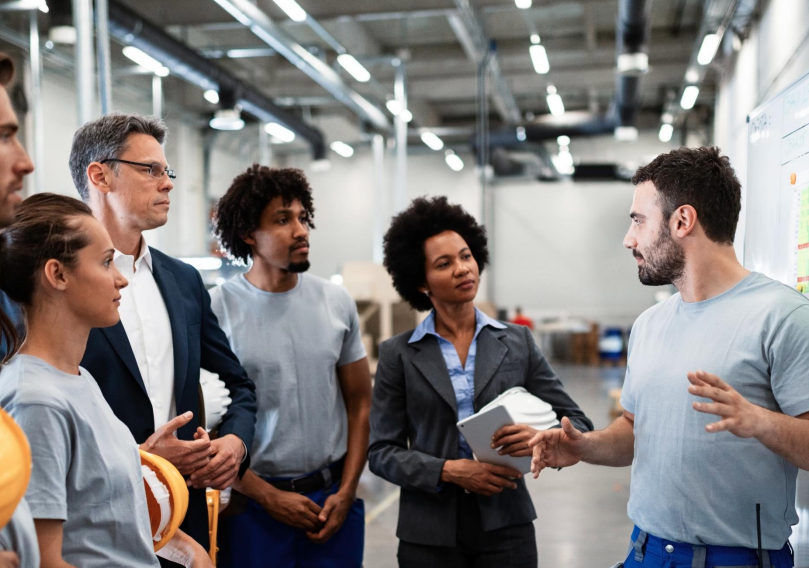
The Detroit-Warren-Dearborn Metropolitan Statistical Area (MSA) recently was allocated $1 million to develop a plan for reducing greenhouse gas emissions and other harmful air pollution through the US-EPA’s Climate Pollution Reduction Grants (CPRG) program. The plan will cover the MSA’s six counties – Wayne, Oakland, Macomb, St. Clair, Livingston, and Lapeer – as well as Washtenaw and Monroe counties. The Southeast Michigan Council of Governments (SEMCOG), which is the lead agency for Southeast Michigan’s Climate Action Plan, will manage the funds. The plan is in place to help local governments improve and maintain Southeast Michigan’s transportation systems, environmental quality, economic interests, and infrastructure. SBN interviewed SEMCOG Planning Director Kevin Vettraino about what this will involve, how it will roll out, and how it impacts businesses, residents, and communities in Southeast Michigan. Q: Tell us about SEMCOG. A: SEMCOG is the regional planning organization for the seven counties that make up the Southeast Michigan region: Livingston, Macomb, Monroe, Oakland, St. Clair, Washtenaw, and Wayne counties. Our primary mission is to support our local government members, including counties, cities, villages, townships, and educational institutions. We work to improve the quality of the region’s water, make the transportation system safer and more efficient, revitalize communities, and spur economic development. These things shape the areas we get involved in. I like to say we focus on planning for the issues or opportunities that cross geographic or community boundaries, such as roads, rivers, lakes, air, and the economy. Q: The U.S. Environmental Protection Agency allocated $1 million to develop plans for reducing greenhouse gas emissions, and SEMCOG is acting as the lead agency to develop a climate action plan. What will this entail? A: At a high level, the plan will establish community-developed and evidence-based methods to reduce greenhouse gas emissions that will meet the requirements of the EPA and CPRG. One approach is to enhance natural areas that capture carbon. The plan will also integrate extensive stakeholder outreach and input, along with equity considerations, and consider the impact of policies, strategies, and actions from the regional level down to the household level. This work complements the recently adopted Southeast Michigan GREEN: Strategic Framework for Growing our Resilience, Equity, and Economy with Nature, which is an initiative to address some of the region’s most pressing challenges – managing floods, fostering climate resilience, improving community health, and protecting our natural assets – all while creating vibrant places where people want to live and where businesses will thrive. Q: What is the next step and timeframe for action? A: The next step will be launching a task force with the intent to meet at least eight times over two years. Part of the large overarching task force will be smaller focus groups that will cover more specific parts of the plan. The focus groups have not been formed yet, but they are likely to focus on transit, energy efficiencies, EVs and the impacts of the transition, materials management, and nature-based opportunities and impacts. Beyond the focus groups is community engagement. This is critical for success. It’s important for us to have a two-pronged approach here, that being education and data sharing and also public engagement and input. Q: What does community engagement entail? A: Surveys, local meetings, webinars, and other outreach with a lens toward ensuring that the benefits and policies that come out of this work support all residents, including lower-income residents. These people have traditionally been underrepresented and more impacted, and we need to ensure that any actions we take support them and don’t further negatively impact them. Q: How will this impact Southeast Michigan businesses and communities? A: My hope is that through our work there is an education component. In basic terms, we need to make sure we are speaking the same language. There are a lot of terms around climate action such as equity, green infrastructure, etc., and we need to ensure that whether you are a business, community, government entity, or a resident, we all have a similar understanding regarding what these terms mean and why they are important. I hope that business leaders can see themselves within the strategies, policies, and actions that come out of this work and align with them. We all have a role to play in this. This plan will not be the silver bullet that can solve the climate challenges in the region but all of us together can make an impact. From installing a green roof or rain garden to ensuring all people have safe facilities to walk or bike to destinations, whether it’s a sidewalk or bike path or considering nature-based and green infrastructure solutions when putting in a new parking lot or reconstructing a roadway, there are things we all need to be thinking about and doing. Q: What are your main challenges? A: Again, it’s getting a common set of words and a familiar language. It’s also about education and making everyone understand the importance of the plan, and working toward a healthier region, and putting sustainability practices in place to support our climate long into the future. A lot of our work targets dates far into the future, such as 2050, and sometimes it’s difficult to get buy-in when it’s so long-term. The challenge is we need buy-in and immediate action to get to where we want on the horizon. Q: What are the main opportunities? A: First, we have the $1 million funding to help develop a plan, inventory our greenhouse gas emissions, and develop policies – which is great. Through the development of this plan, the region and our communities and businesses will become competitive for an estimated $4.6 billion in EPA grant funding for implementation. Second, if we are able to get folks both in leadership and residents across the region to both understand the importance of the action plan and to be intentional about environmental justice and the allocation of funds and the action to support those directly impacted, that is a great success. Q:
Detroit/Wayne County Port Authority Seeks Decarbonization
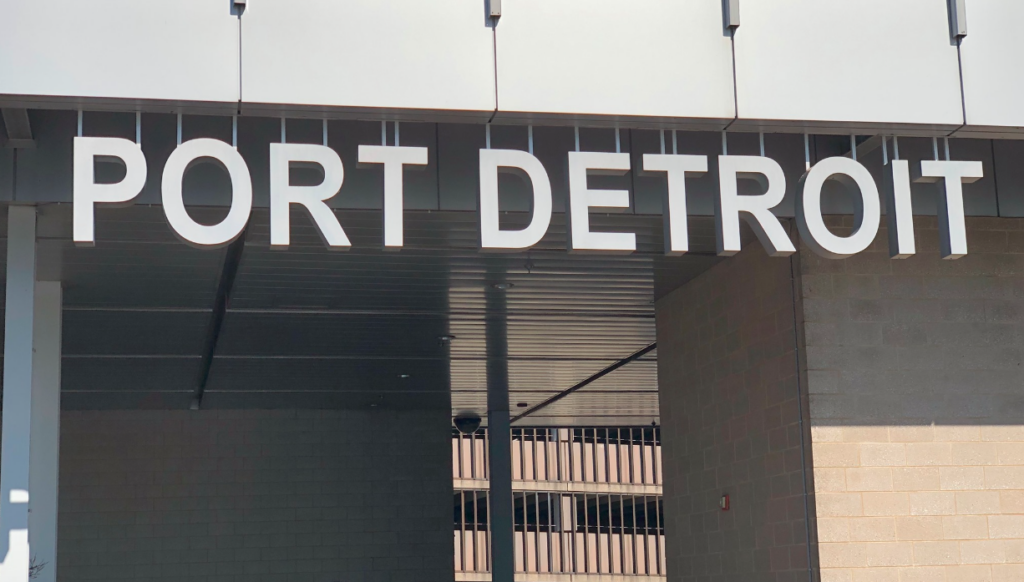
Michigan’s largest inland port, the Port of Detroit is located on the Detroit River in Wayne County as well as the navigable portions of the Rouge River. The Detroit/Wayne County Port Authority oversees the port, which is made up of multiple marine terminals for handling general, liquid, and bulk cargo as well as passengers. Each year, the Port Authority oversees more than eight million tons of cargo at 29 private and public sector terminal facilities in the Port of Detroit, including international and domestic commodities, which are shipped in and out of the port. The port is the third-largest steel-handling port in the nation. At the Port Authority’s own terminal, steel, aluminum, and project cargoes are handled for the support of the manufacturing community in Southeast Michigan. Now, the port is undergoing a decarbonization project which aims to reduce its environmental impact and improve air quality. The decarbonization project will be undertaken in partnership with Tunley Engineering and Southwest Detroit Environmental Vision (SDEV) and will involve a range of initiatives, including the implementation of renewable energy sources, the electrification of port equipment, and the use of cleaner fuels while ensuring residents and businesses in the area are involved and have input. Said Raquel Garcia, executive director of SDEV, “We are on board to – among other things – make sure the community understands what’s happening in their own backyard and that they have access to people leading the project.” SBN Detroit spoke with the executive director of the port, Mark Schrupp, about the project and its impact on tourism, area businesses, and more. Q: The Port of Detroit is going green with the goal of net zero by 2040. Can you provide some background on how you arrived here and how you are taking this on? A: Discussions originated in early 2022 with the Great Lakes St. Lawrence Governors & Premiers, looking at ways to help decarbonize the maritime industry. Our two overarching goals are to improve air quality and reduce greenhouse gas emissions. A lot of the ports on the West Coast and Europe have been doing good work for several years. The Midwest is a little behind but starting to accelerate. We reached out to state Sen. Stephanie Chang, and she has been a great supporter. She assisted in helping us to secure $1 million in state funding to undertake a study on where we are today and develop a plan to decarbonize. The big challenge is that the Port Authority does not have the authority to compel the private terminals, which are responsible for 95% of the cargo, to participate. We have been identifying incentives and working to persuade these terminals to develop a single plan, measure the greenhouse gas emissions, and develop strategies together. To start, we needed outside expertise. We put together a scope of work in December and put out an RFP and ended up partnering with Tunley Engineering, which has been eager to jump in and help. We have also been working heavily with Southwest Detroit Environmental Vision (SDEV) who – among other things – is helping us to connect to the community to ensure we understand what their interests are. You can’t take on just a decarbonization plan… in the port region where people work and live it’s also about air quality, vibrations, sound and particulate matter, and more. So, we are looking at these things and working to address them through best practices. Since April, we’ve been engaging with terminals to get a baseline report of greenhouse gas emissions for each terminal. Once finished, we will publish an interactive map for people to see the current carbon footprint. We are specifically looking at the carbon footprint of moving cargo in and off the water – not the industrial practices of the businesses. We are also looking at the cruise ships that we service at our downtown dock, and the impacts and the footprint of governmental entities that participate in the port, such as the Detroit Police Harbor Master, U.S. Army Corps of Engineers, and more. This is a good time to be taking all of this on. There is a lot of federal and state funding and tax incentives that help bring down the initial cost of switching fuel sources. We’ll be applying for grants to help the terminals move forward. Q: What other entities are you working with to take on this project? A: We are engaging with many organizations and local sustainability offices to help and support our efforts. We have been working with The Department of Environment, Great Lakes, and Energy (EGLE) to get data and take advantage of any grant opportunities to tackle air quality and particulate emissions. We have met with the EPA Region 5 office in Chicago to stay close in terms of funding opportunities and ways they can support our efforts. The International Maritime Organization has a 2050 plan in place and is setting standards around the fuel in the ships that move in international waterways. They are looking at cleaner fuel alternatives as well. The Port has a fueling station run by Waterfront Petroleum, and they are working toward a biodiesel fuel that can be used without having to change engines. Maritime infrastructure is very expensive and lasts a long time, so making changes needs to be planned carefully. Changing fuel to a lower carbon footprint, like biodiesel is a good first step because it doesn’t require any changes to ship engines. Zero-carbon fuels like hydrogen and ammonia will take more planning and investment. We can’t do it all at once but should do what we can as we work in the right direction. Q: Do you think this a unique undertaking for a port authority? A: Ports on the coasts have been working on this for some time. California has led the way and those ports are ahead of us. The Port of Cleveland has done work to reduce its carbon footprint. So, they are a little ahead of us, but
AECOM, Building the Economy, Sustainability Through Infrastructure
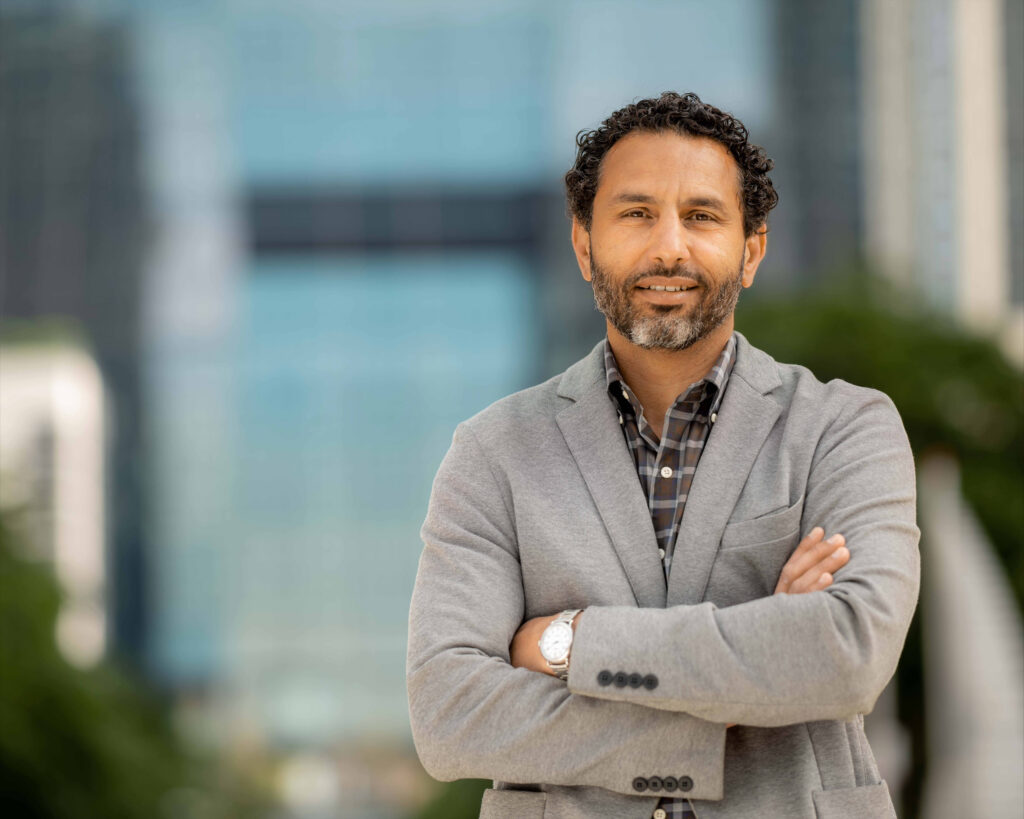
The work of AECOM Great Lakes Inc., which moved its primary office housing about 75 employees to Detroit last year, is the designer and builder of the Gordie Howe International Bridge, is designing the Henry Ford Macomb Hospital expansion, and also is working on I-75 and I-696 replacement work in addition to other infrastructure projects. The office is part of Dallas-based AECOM – ranked No. 310 on the 2023 Fortune 500 – which works on infrastructure projects across the globe. SBN Detroit talked with G. Jerry Attia, AECOM Great Lakes vice president and managing principal, about how the company thinks about and acts on sustainability and how its presence in Detroit impacts the city and Southeast Michigan. Q: What should we know about AECOM’s approach to sustainability? A: AECOM is the world’s largest infrastructure consulting firm, and we design infrastructure in four main areas: Vertical infrastructure – mostly buildings and anything vertical. Horizontal infrastructure that consists mostly of transportation systems such as highways, train rails, rapid transit, and other transportation systems, etc. Underground water infrastructure including stormwater management systems, water distribution systems, and other electrical systems. Program management for infrastructure systems that fall outside of those three groups. We also have an environmental business. When it comes to sustainability, everything we do uses carbon, so we have a large focus on the environment and resilience around infrastructure and building decisions. Within our new office in Detroit, when it comes to ESG (environmental, social, and governance) we put a lot of emphasis on the S – making good social decisions. In today’s market, often the “E” takes precedence over the “S,” and in cities like Detroit, the “S” must come first. Understanding the needs and constantly seeking the voice of disenfranchised people as to how they interact with infrastructure is paramount. So, we like to think about the “whom” in infrastructure. There has been a history of poorly made infrastructure decisions that have adversely affected certain social groups and as such they become less resilient. One example of this is the highway designs and redlining that happened in the ‘50s and continues to this day. Infrastructure is developed to enhance the economy and create economic development but often is not focused on the needs of disenfranchised people. A lot of my work in Detroit is focused on advancing opportunities for African Americans in engineering and architecture. Q: Will you elaborate a bit on how you think AECOM’s approach now keeps in mind the “whom” in infrastructure so as to not adversely affect certain social groups? A: I always insist we do two things we did not use to do on every project. First, we seek out the most diverse team possible – including gender, racial, and ethnic diversity. I believe that diversity of thought is the key to creativity. Second, we seek out as many people who are going to be affected by the imposition of whatever infrastructure project or building we are considering and get their perspectives in advance. This means get out of the C-suite and into the user groups, look for unintended consequences of actions, study history to understand the shortcoming of previous infrastructure projects, look for consensus and collaboration among people and seize on it, address the concerns as thoughtfully as possible, and incorporate the affected individuals needs into the solution. Design thinking can be really helpful when solving big problems. I work to lead the team to look always look for multiple benefit solutions, always be empathetic, and always seek out unique perspectives to understand a problem more deeply. And that only happens with diversity. Q: Has AECOM always had this focus on sustainability? A: It’s an important legacy for all of us, and AECOM formally adopted an ESG profile about three years ago. We are a $14 billion organization with nearly 45,000 employees and we are not as diverse as I think we should be. But I’m proud to say that when you look at the Detroit office it’s a strong representation of our city. Q: Your website says that you are leading the change towards a more sustainable and equitable future, partnering with those who want to make a positive difference in the world. How and who in Southeast Michigan are you partnering with? A: We talk about this in a couple of ways. We seek clients who are interested in doing the right thing for the environment in general. Most municipalities and government entities are focused on it and we work with several of them – Oakland County, Wayne County, the City of Detroit, and more. By and large, AECOM can teach as much as do. We look for minority partners who share our interest in advancing opportunities for disenfranchised people. I think the size of AECOM and our depth and breadth of work gives us a platform to serve as a good example to others. Q: How do you think the decision to move your primary office in Michigan to downtown Detroit speaks to the revitalization of Detroit? A: Yes, we moved our primary office in June 2022 to Willis and Woodward in the Cass Corridor. We had planned to do so earlier but due to the pandemic, it took longer than we had wanted. Large companies bring economic development opportunities to the areas in which they are located, so I think AECOM’s presence in Detroit helps to contribute to the city in some key ways, such as paying city taxes, employing Detroiters, and bringing our employees to the area to help the restaurants and retail, etc. I’d like to see more companies do this. Q: How do you think the work that you are doing now out of this new office impacts sustainability in and around Detroit? A: We look at every project through the lens of sustainability, resilience, and diversity and I think our presence helps more people use this lens for the city. Sustainability is just as much about society as it is about the environment and good decision-making around
Sustainability Business Network Detroit, One Year In
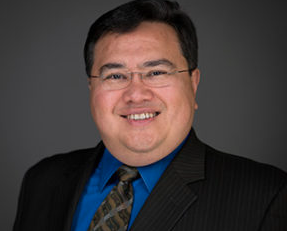
Sustainable Business Network Detroit was formed a year ago out of a study conducted by Erb Family Foundation and is helmed by Terry Barclay, chair, SBN Detroit, and CEO Inforum; Neil Hawkins, president of Fred A. and Barbara M. Erb Family Foundation; and Cindy Goodaker, VP, signature programs and communications, Inforum, along with a distinguished list of organizing members steeped in the sustainability community of Southeast Michigan. The group’s goal is to create a sustainable business ecosystem by convening a network serving as a hub for idea-sharing, programming, content, mentoring, and more – to accelerate the systemic adoption of sustainable business practices in Southeast Michigan. The primary belief is that business is a positive force for change and can and should be used as a force for good. For the past twelve months, the network has worked toward three core pillars; advancing and amplifying sustainable business practices in a centralized hub; creating urgency to activate; and articulating a sustainable way forward for the region. Here, Neil Hawkins shares his viewpoint and insights on the progress the network has made this year and the vision for the future. What is the impetus behind SBN Detroit? How did the idea arise and how was it developed? I’ve been involved with sustainability as it relates to businesses for some time and worked for Dow as their chief sustainability officer. Subsequently, Fred and Barbara Erb established the Erb Institute for Sustainable Global Enterprise more than 25 years ago at the University of Michigan. No program like this had existed in the world up until then, and it was very forward-thinking and visionary – the idea that business had a positive role to play in environmental sustainability. I came to the Erb Family Foundation as the president four years ago and at that time, we commissioned a study done by Sarah McCall – now working as SBN Detroit administrator – of what needed to be done to accelerate progress in sustainability within the region. That research was the impetus behind starting a network that would accelerate sustainability through business collaboration and progress – SBN Detroit. How do SBN Detroit’s three pillars work together to achieve its mission of mobilizing businesses and organizations to make Southeast Michigan a global leader in sustainability? Fundamentally the pillars are in place to help break down the barriers – silos. There are too many silos that exist in the region, and they prevent progress. These are silos between companies and across different-sized companies, and between companies and non-profits etc. All of those together are a barrier to making faster progress. These three areas of focus – urgency, centralization, and looking forward – are helping to tear down these silos and promote collaboration. The second statement was a fragment as written. I think it’s supposed to say: These three areas of focus – urgency, centralization, and looking forward – are helping to tear down these silos and promote collaboration. (I’m not sure my edits made that clear) A year in, what impact do you think SBN Detroit has made and is making? What is its greatest success so far? I think SBN Detroit has helped to completely change the level of dialogue within the region about sustainable business practices. I see it as a ‘before SBN Detroit and after SBN Detroit.’ We are seeing new collaboration and a lot more discussion about how we can work together to move forward, and we are seeing it on a completely different level. What specifically do you attribute this to? I think our biggest success in the last twelve months is the March 2022 event we had featuring Dr. Katharine Hayhoe on improving the dialogue about climate change. It was a remarkable event, and the timing was such that it was many people’s first foray into a public space since COVID had begun. The narrative of the event coupled with the interaction among people with like minds and like interests sparked renewed energy toward our collective goals. I also attribute our success to our steering team. I thank them for laying out a strategy and faithfully bringing people together. If the steering team works well together – and it has – we have a good shot at having continued success. What is the importance of collaboration when it comes to sustainability in this region? It is only going to be through collaboration that our region and ecosystem reach their full potential. SBN Detroit is focused on accelerating collaboration by creating opportunities for dialogue and action. We’ve accomplished this, and I see the fruits of it already. Excellent groundwork has been laid. What are your thoughts on SBN Detroit as a network? I think SBN Detroit represents many networks and is not a single network. This is still playing out a bit, and it’s a good thing. As long as we can keep companies and nonprofits and different universities and institutions involved and collaborating and working together that’s a great thing. What do you see as the primary obstacles to network formation, and how can they be overcome? The key obstacle is competition – competition between businesses, between businesses and nonprofits, between nonprofits and universities, between universities and other universities, and so on. The key thing we all have to focus on is that this is not a zero-sum game. By collaborating we make the pie bigger for everyone. There is growth here to be had and a lot of investment to come. We can all share in that growth if we are working together. This will position metro Detroit well. What do you see as the corporate-level impact of SBN Detroit? Having come from corporate, what I see through SBN Detroit is a renewed sense of group action and focus on the region, the Great Lakes, and the planet. Pre-COVID some silos existed, and then you throw in a pandemic that forces people to not even go into their workplace, and it is significantly exacerbated. We have started to create a sense of urgency and
Eastern Michigan University – Steam Heat, Solar Panels, and a Recent Bronze STARS Rating
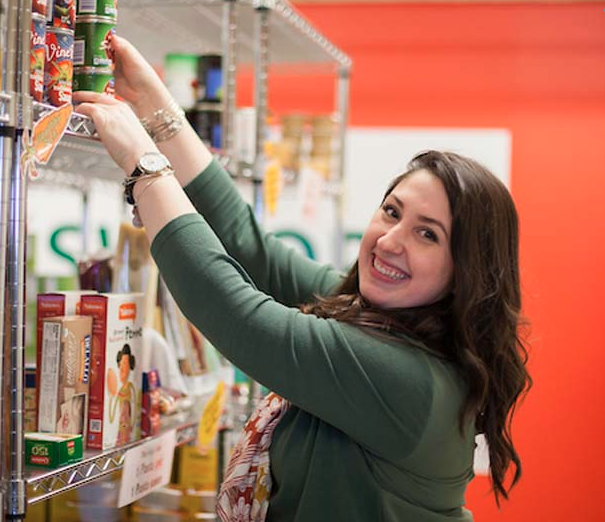
Eastern Michigan University approaches sustainability through a systemized framework and a community-derived mindset that together drive several sustainability initiatives and sustainable infrastructure endeavors on campus. For its sustainability framework, EMU uses the Association for the Advancement of Sustainability in Higher Education (AASHE) and its Sustainability Tracking, Assessment and Rating System (STARS) system and has developed a President’s Sustainability Commission, comprising a broad array of offices and people across the university to develop and execute sustainable practices. SBN Detroit spoke to Tom Kovacs, chair of the president’s sustainability commission and professor of meteorology and climate in the Department of Geography & Geology, about EMU’s sustainability efforts. Q: What are some of the recent sustainability initiatives you’ve put into place? A: First, we are very proud to have completed our STARS certification process and received Bronze Certification. We know that there is room for improvement, which is what we are working on this year. One of the areas we scored lower on is engagement, so to that end, we are building sustainability information into our orientation for 2023 and also are doing a lot more to let people know the sustainability commission exists and inviting people in to help with our efforts. We also very recently partnered with a sustainable mobility solution – Spin Scooters – as the exclusive scooter provider on campus which is helping a lot with student and staff transportation. Another development is a new partnership with EnergySage. EnergySage provides a marketplace that connects interested parties to vetted installers. You simply list your needs, and the various installers provide you with a quote and basically compete for your business, so you ultimately get the best deal. There is also an educational component of EnergySage that offers advisors to help work through the options, as well as a full library of resources on clean energy, and how to live more sustainably. This collaboration helps us improve our STARS ranking and benefits the EMU community so it’s a win-win. Q: How is the university’s heat powered? A: We have a 55-ton cogeneration system that is powered by natural gas and produces electricity and steam. The system supplies approximately 98 percent of the heat and 93 percent of the electricity to the 800-acre campus. The unit will create an annual reduction of 21,305 tons of carbon dioxide (CO2), equivalent to 78.2 million miles driven by an average passenger vehicle – or the preservation of 260 acres of forests. Q: What are some other examples of campus infrastructure focused on sustainability? A: We have solar panels installed at bus stops lining the perimeter of campus and one in the middle of campus. The energy from the sun is stored in the battery assemblies to be utilized during the evening hours to keep travelers safe. We also have a student-led Giving Garden that provides an opportunity for staff, faculty, students, and Ypsilanti residents to grow fresh produce. It’s also used to educate local preschoolers and other students in the area. There is a new composting effort underway, and the garden provides locally grown food to the Swoops Pantry. Q: What is the Swoops Pantry? A: The Swoops Pantry was initiated by a former EMU student and is run by a leadership board of faculty, staff, students, and alumni volunteers. It operates as a sustainable resource for food-insecure students. There is a large stigma involved so they work hard to make things discreet and anonymous. Similar to Swoops, we also recently initiated an EMU Career Closet that provides apparel for students going on interviews. This is a great resource for those who don’t have the means to shop and purchase extra clothing. Q: The dining services in EMU dorms are managed by Compass Group’s Chartwells Higher Education Dining Services. What does this mean in terms of sustainable food practices? A: We shifted to privatized dining about six years ago and work with Compass Group to make dining a more sustainable endeavor. They’ve partnered with local community gardens; they work to incorporate composting; they work to limit waste; and they host a number of events such as Meatless Mondays and Farm to Fork luncheons. They also host a teaching kitchen. We have people from their team who volunteer on our Sustainability Commission, and they will be speaking at our student orientations on sustainability. Q: You also have an office supply program – Partnering for Sustainability. A: Yes, in 2019 we partnered with Office Depot. This allows the EMU community to purchase greener office products and select greener options when available. Recycled bags and reusable plastic totes are also used for delivery versus boxes. Q: What are your areas of focus for the near future? A: We’ll continue all of our efforts in the initiatives we’ve discussed here and seek to enhance them where appropriate. And again, coming off of the recent STARS certification process, our big focus is engaging the community in all of these efforts and more to work toward a greener campus and surrounding area. Be sure to subscribe to our newsletter for regular updates on sustainable business practices in and around Detroit.
Michigan Green Communities is Moving Community Sustainability Initiatives Forward
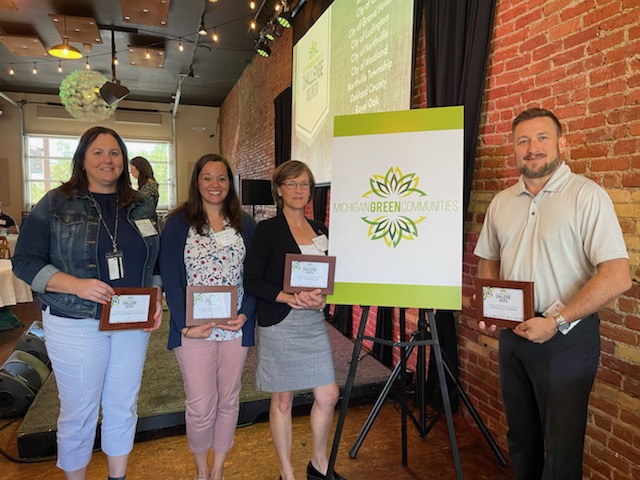
Established in 2009, Michigan Green Communities (MGC) is a statewide sustainability assistance program that works to embed sustainability into municipal and county operations. MGC is a collaboration and partnership of the Michigan Economic Development Corporation (MEDC); the Michigan Department of Environment, Great Lakes, and Energy (EGLE); the Michigan Department of Health and Human Services (MDHHS); Michigan Department of Transportation (MDOT); the Michigan Department of Natural Resources (MDNR); the Michigan Association of Counties (MAC); the Michigan Municipal League (MML); and the Michigan Townships Association (MTA). It is led by a 15-member steering committee from the partners and local governments, including West Bloomfield Township, Ann Arbor, and Canton Township. SBN Detroit spoke to Danielle Beard, Michigan Green Communities coordinator, to find out more about the work it is doing to impact sustainability initiatives in Southeast Michigan and throughout the state. Q: What is Michigan Green Communities? A: Michigan Green Communities (MGC) is a sustainability benchmarking, networking, and technical assistance program for municipalities and counties in Michigan. The goal is to embed sustainability in local government operations and promote innovative solutions at the local, regional, and state level. The main component of the program is the annual MGC Challenge (that’s the benchmarking piece) where communities track in their online accounts whether they’ve completed or are in progress on a set of action items and log metrics (click here for the full list of action items and metrics). Communities that participate in the MGC Challenge have access to free support and technical assistance programs through the MGC program and EGLE’s Catalyst Communities program. Q: What is the impetus behind MGC? A: There are a lot of benefits to embedding sustainability into municipal and county operations. Cost savings is a big driver for communities as they can slash their energy and water bills, helping them control the cost of their operations. Additionally, Michigan’s weather patterns are changing drastically, and local units of government play a large role in adapting our society to these changes. Local policies and decisions can help to mitigate the effects of heat waves, severe snowstorms, massive rain events, and more. Multiple state agencies interact with communities on different areas of sustainability. The MGC program was designed to bring those agencies together to collaborate on how to best meet the needs of local governments. And because local governments are also on the steering committee, they’re providing feedback to state agencies on the challenges they face to inform the agencies’ work. Q: What areas of sustainability are you focused on? A: The Michigan Green Communities program focuses on embedding sustainability into local government policies, programs, and operations. The MGC Challenge action item categories outline this best: Planning for Inclusive and Lasting Impacts Climate Resilience and Adaptation Energy Efficiency & Renewable Energy Responsibly Managing Materials Sustainable Land Use & Economic Development Improving Health Outcomes Protecting & Conserving Water Resources Support Clean & Inclusive Mobility Inspire & Mobilize Residents Q: What examples can you give of the work that’s been done? A: Since it was started in 2009, over 100 communities have participated in various ways and taken steps to advance sustainability in their communities. In our 2021 challenge: 45 communities participated representing 3.6 million Michiganders. MGC awarded 12 bronze certifications, 10 silver certifications, and 23 gold certifications. Over 1,500 sustainability actions were logged as complete, and over 1,000 were logged as in progress. The MGC Challenge added a set of metrics to track data like GHG (greenhouse gas) emissions, community water use, and more. We launched the MGC Accelerator Cohort to advance sustainability practices in bronze & silver MGC Challenge communities. The current challenge is now live, and communities can report on their sustainability actions through the 2023 calendar year. Q: What does the future look like for MGC? A: In short, the future of MGC will involve bringing more technical assistance, resources, and templates to communities to help them expedite resiliency strategies and decarbonize their operations. This will also involve more networking among communities so they can learn from one another and not reinvent the wheel. We launched the MGC Accelerator Cohort in January 2023, which is a group of bronze and silver-certified MGC Challenge communities that come together as a group to address sustainability issues. The first topic that we’re focusing on is green infrastructure. Many communities in Michigan have been dealing with flooding and water runoff causing pollution, fluctuating shoreline water levels, and severe weather events. Green infrastructure solutions can help to address these issues in a way that protects man-made infrastructure and natural features. The group will meet monthly with subject matter experts and consultants that MGC has hired to share ideas, draft ordinance language, and identify potential implementation opportunities and funding for green infrastructure projects. After the green infrastructure module, the cohort will select another topic to work on in a similar style. The cohort is open to any community that has taken the previous Michigan Green Communities Challenge or plans to participate in the current Michigan Green Communities Challenge. This work is being funded by the MEDC. Be sure to subscribe to our newsletter for regular updates on sustainable business practices in and around Detroit.
Through Staffing, Cleaning, and Advocating for the Community, Business Owner is Working to Motivate Detroiters Toward Sustainable Growth
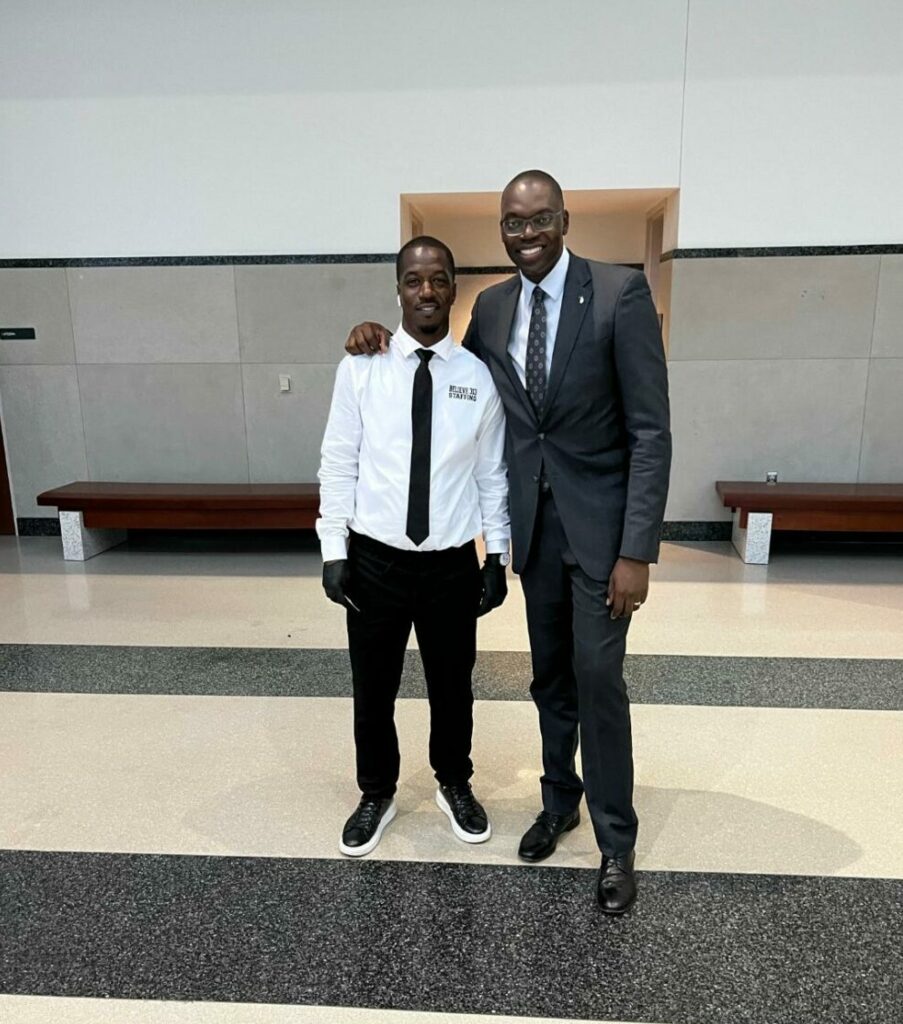
From social justice to getting Detroiters back to work, and even an emerging green dumpster business, Mario Kelly is following his passion for connecting those in the community to sustainable opportunities and inspiring others to follow their business dreams. To that end, Kelly started B3L1EV3 – a motivational-apparel company – several years ago to inspire Detroiters to go after what they believe in. Keeping that sentiment, he then launched Believe 313 Staffing, Believe 313 Cleaning, and soon-to-be Believe 313 Dumpsters. Born and raised in Detroit housing projects, he has been a community activist and liaison for years. Kelly started Believe 313 Staffing in 2017, following that with the launch of Believe 313 Cleaning in 2020, and now holds contracts to do post-event cleaning for Ford Field, Little Caesars Arena, Comerica Park, the Fox Theatre, and Pine Knob Music Theatre. His extended vision for Believe 313 Dumpsters is about diverting commercial and residential waste from landfills in the city of Detroit and beyond. Here he talks to SBND about his businesses, his inspiration, and his continued efforts across areas of sustainability in Detroit. Q: How did Believe 313 Staffing start? A: I grew up in a HUD neighborhood at I-75 and Canfield and nearby was the meat packing company Wolverine Packing. They had received a tax abatement from the city of Detroit to build a storage unit and a park in the neighborhood. Part of that tax abatement required them to hire 50 people from the surrounding area. Owners Jim and Jay Bonahoom came to the community to get insights on what people wanted and to start to talk about hiring. People in the neighborhood referred them to me because I was heavily involved in the community and knew a lot of people. They told me they need 50 people and I brought them 100 applicants. Jay and Jim then began urging me to start a staffing company to help connect people in the neighborhood to opportunities. I thought – what does a kid from the projects without a degree know about starting a business? But they kept advocating for me and supporting me, so I did it, and today it’s a seven-figure business. Q: You’ve been very involved in social justice and community. You started a program called Canfield 75, an effort that aimed to bridge the divide between housing projects in your community. You created a neighborhood Meet Up and Eat Up – a free summer lunch program for students – and you’ve coached and led youth groups in several capacities. Where does your passion come from? A: I’ve always felt that my purpose is helping people. And growing up where I did … you form strong bonds. We had to help each other in whatever we had going on. There is a real sense of community in underprivileged areas. I want to and can get people in the community to work. They are ready and willing to work, and I enjoy connecting people to local businesses and creating opportunities for people to get ahead. My purpose here is to help assist people on their journey to financial stability. It’s a win/win. Q: You grew your staffing company and added a cleaning company – Is that right? A: Yes. I had the concept and business cards – the start of the cleaning company. I was involved with the Detroit Youth Choir and they were invited to take a tour of Shinola that I attended. That was serendipitous because the individuals at Shinola happened to mention that they needed a new cleaning company. I wrote up a proposal and have been cleaning for them since. Eventually, I was referred to Comerica Park, and that opened the door to all of the arenas. I just held a two-day job fair to hire people to clean Ford Field on Thanksgiving. The pay is $22 per hour which is solid. I had 120 people come out for this opportunity. This helped folks earn money to buy Christmas gifts and fulfill other basic needs. Q: What sustainability practices do you follow regarding your work at the arenas? A: We use all eco-friendly cleaning products. All of the arenas have robust recycling practices, and we sort all plastics, cardboard, cans, and bottles for the arena’s recycling companies to then handle. I’m working to convert everything we do as a company to environmentally friendly – such as cleaning products – and a focus on waste diversion. That is the impetus behind the new dumpster company – Believe 313 Dumpsters. Q: Tell us about Believe 313 Dumpsters. A: Living and working in the city, and through the cleaning business, I’ve realized that between residents and businesses we have a lot of dumpster usage in the city. And most of the contents of those dumpsters is ending up in landfills. The goal behind Believe 313 Dumpsters is to recycle and divert as much of the contents of the dumpsters as possible. Q: What does the future look like for the Believe 313 companies? A: Motivating Detroiters in a way that moves people and the city forward in a sustainable way. Whether that’s from a financial and economic standpoint, a social justice standpoint, or an environmental standpoint, for me it’s about creating opportunities for people to thrive. Be sure to subscribe to our newsletter for regular updates on sustainable business practices in and around Detroit.
Rockford Construction – Focusing on the Full Life Cycle of Spaces
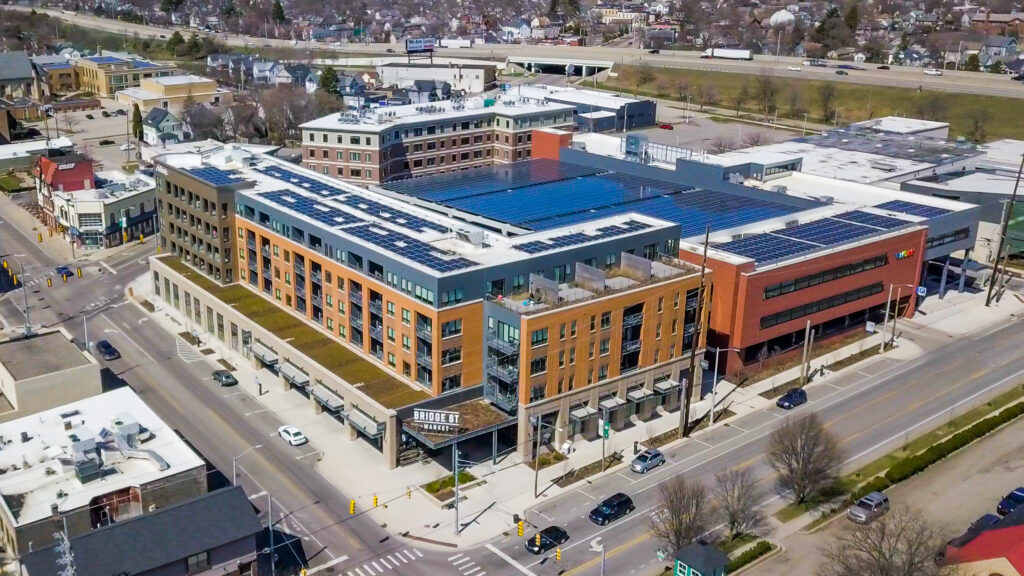
From real estate development to construction and property management, Rockford Construction has been serving the commercial, multiunit, educational, industrial, healthcare, and retail markets throughout the Midwest for more than 30 years. How do they approach sustainability? Mike VanGessel, founder and CEO of Rockford Construction, shares that and more with SBN Detroit. Q: Please tell us about the sustainability practice you have in place. A: Rockford’s current sustainability efforts reflect a “triple bottom line” that is focused on people, the planet, and profit. We consider ourselves to be good stewards of all three of these finite resources. This is certainly a broader view than many people take, but one that is important to our clients and our communities. And we’re not just a construction company. We also develop, own, and manage properties, so our focus extends across the full life cycle of space – not just the initial resources during construction, but the total cost of ownership and the impact our buildings make into the future. As a result, our efforts are quite broad. But each building type brings its own set of challenges and opportunities, allowing us to customize our approach and maximize value to our clients. Q: When did your focus on sustainability come about? A: Decades ago. Rockford was an early adopter of sustainable construction practices. We knew that buildings were a major driver of energy consumption at that time. As a company committed to delivering value to our clients, we recognized that achieving greater energy efficiency would also decrease long-term costs. As the sustainability movement evolved and our knowledge of healthy buildings has grown, our efforts have expanded to include things like water conservation, low VOC (volatile organic compounds)-emitting materials, locally sourced and rapidly renewable materials, and more. Our more-recent triple bottom line approach recognizes that “people” and “profit” are also finite resources, as we’ve seen in our current economy. The shortage of workers – not just in construction but in most industries – has driven a focus on a construction process and end-user facilities that are highly efficient, productive, and attractive to people. The reduction of waste in time and money allows those resources to be deployed elsewhere. Q: What are some examples? A: Over the years, Rockford has completed hundreds of projects that are LEED certified or designed to meet certification requirements. But our approach is applied to all our projects, exploring the building design, systems, and materials to determine the right solution based on client needs, first costs, and long-term operational expenses. The most successful projects result from early involvement and clear goal-setting. One of the best examples can be found in Circuit West, a cutting-edge energy district that encompasses a 13-block area in Grand Rapids. As Rockford was developing and constructing buildings in the area, we partnered with Consumers Energy in their effort to pilot next-generation energy technology. Together, we installed 1,800 solar panels and battery storage capable of producing 500 kilowatts every hour. Power lines were buried, and solar arrays were installed in conjunction with other construction work, greatly reducing installation costs. The result is more reliable, renewable energy for the neighborhood. While Circuit West was a large-scale effort, early involvement allows us to explore all possibilities, uncovering those that make the greatest impact on our clients’ triple bottom Line. Q: What are the drivers behind these practices? A: The driver of sustainability is simple. We are creating healthier, more energy-efficient, and cost-effective buildings for our clients and the people who will live, work, play, and heal inside of them. In the early days, sustainable design and materials were thought to drive additional costs to buildings, and owners had to be deeply committed. Today, a better understanding of good design, appropriate systems, and more readily available sustainable and renewable materials are all driving cost savings. Why a client chooses sustainable solutions – cost savings, environmental responsibility, or healthy spaces – isn’t important. What matters is that the result helps us conserve resources and positively impact our world. Q: Rockford services so many different industries and types of construction – how do your sustainability practices differ between projects? A: Each project is unique, and clients have different goals and expectations. That said, best practices can vary based on different project types. For example, some industrial buildings are high users of energy and, at times, water. Energy-efficient systems, water conservation, and grey water options can provide good solutions. In healthcare facilities, research shows that healing environments include natural light, views, good ventilation, low VOC products, and easily cleaned materials. By focusing on what makes each building unique, the low-hanging fruit of sustainability becomes clear. Often, the most sustainable building is the one that is renovated, either for its existing use or for a new one. This is particularly true in an urban setting, where many building exteriors were built to last for decades. By reusing the walls and structure, not only are tons of waste materials diverted from landfills, but owners can capture the value of materials already in place. Warehouses can be converted into apartment buildings, churches become office buildings and schools are reimagined into senior living. Over the years, Rockford has developed expertise in the adaptive reuse of space. Q: Do you have a team of people set up to implement your sustainability practices? A: In the past, the Rockford team included a director of sustainability. However, we wanted to turn what could be described as a “program” into a “practice.” Our construction team and our property and facility managers are all well-versed in sustainable practices. But we have a variety of team members, from accountants to graphic designers, who want to be a part of our company-wide efforts. That’s why we are launching a company-wide Sustainability Committee to continue to expand our impact both internally and externally. Q: Beyond vendors and material choices – what else do you look at? A: Locally sourced talent, vendors, and materials are part of a strategy that is appealing to our clients, who strive to support
College for Creative Studies Launches Graduate Program Toward Developing Leaders in Climate Action
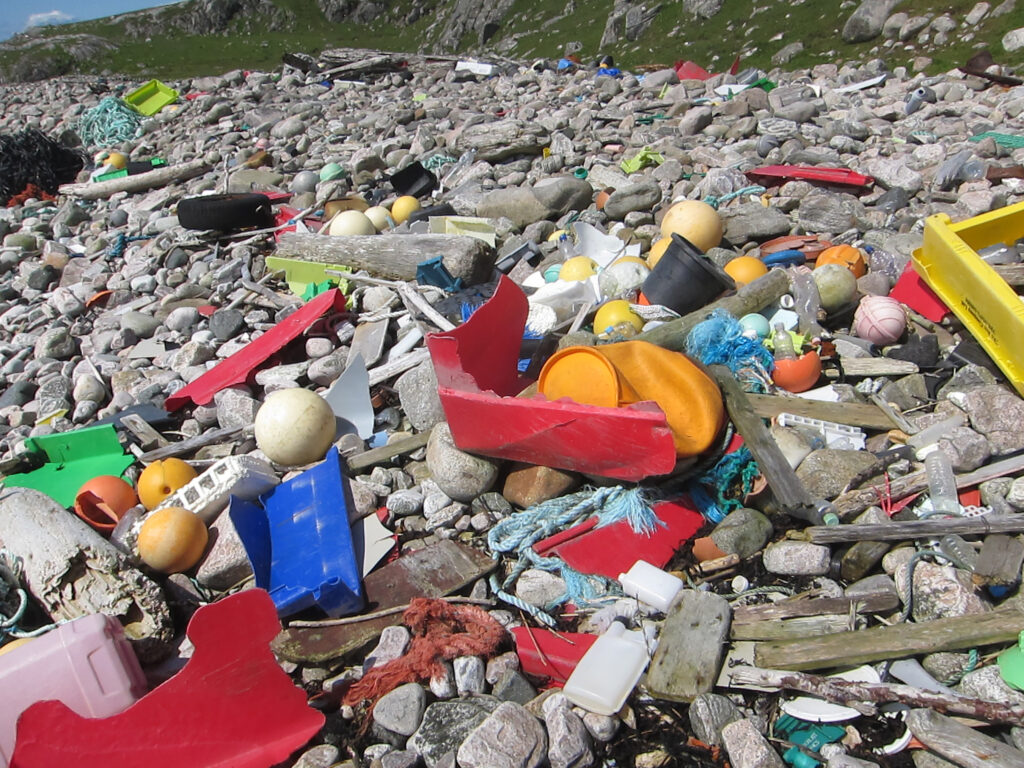
In the fall of 2023, the College for Creative Studies will launch Design for Climate Action – a new graduate program aimed at tackling the global climate action and change emergency from multiple angles. The program invites applications from designers and non-designers of all kinds, bringing together broad multidisciplinary mindsets for interdisciplinary collaboration. It will foster an understanding of zero-waste materials and processes, circular economies, civic infrastructures, and environmental stewardship. At its heart is the drive to bring about change in existing systems and transition to structures that reverse global heating and uphold climate justice and global equity. Leading the program is Dr. Ian Lambert, Dean of Graduate Studies & Research. Lambert is a designer and maker-researcher with extensive experience in academic leadership and curriculum development in higher education in the U.K., the U.S., and China. Lambert has taught sustainable design for more than 20 years and his work with ocean plastic in Scotland along with other waste streams is widely published. He has brought his work with ocean plastic to the Great Lakes and recently joined the Detroit River Coalition. For the last two years, he has been collaborating with the Charles H. Wright Museum of African American History on the d.Tree Studio – diverting dying trees from landfills to become narrative artifacts that elevate climate justice. He is a Fellow of the Royal Society of Arts, and a former advisor to the Creative Conscience Awards. SBN Detroit spoke to Lambert about the program. Q: What is the impetus behind the new Design for Climate Action Master’s Program? A: In addition to further embedding sustainability across the CCS curriculum, we are looking to highly specialize in addressing the climate crisis. This is about working toward and educating about systemic change. There are many perspectives required in tackling climate action, so the program is about foregrounding design thinking at the intersection of multiple disciplines. The program welcomes scientists, engineers, philosophers, and sociologists as well as designers and other creatives. It is the synergy formed by these different skill sets that can drive change in the climate crisis. It’s important to remember that while science presents the facts and explains what is happening, the climate crisis is a cultural crisis, a social crisis, an economic crisis, and a political crisis. It affects humankind in many different ways and it’s not just for scientists to solve. The program takes the position of stating climate problems calmly and rationally. We need to use intelligent and persuasive narratives to bring others, including business leaders and politicians, with us. The debate is often highly polarized, which is dangerous. So, it is important to temper our outrage and avoid alienating those across the divide. Q: What does it mean for CCS to offer this program? Is this kind of curriculum unique to design school offerings? A: The program is focused on action in the climate crisis and systemic change. I don’t know of any other program that takes such a multidisciplinary approach with design at its hub. Also, our grad program is growing, and part of our strategy is to consider where the needs are and identify opportunities for aligning with the activity that’s happening in Detroit. Essentially the program has three pillars that overlap and blend: The circular economy and closed-loop manufacturing and material cycles. Systems and infrastructures – How we can redesign these or make interventions and design out waste? Environmental stewardship and understanding the lasting effects of human production on our environment Q: What implications might this have for the Detroit businesses – graduates with this skill set and education coming into the workforce? A: A recent report in the Atlantic stated that the government will be spending $374 billion on fighting climate change, and some are estimating it will reach $800 billion. This will require experts of all kinds to implement and lead change within businesses, corporations, and public organizations. Experts who can galvanize collaboration and take action in multiple ways. The demand for climate design experts is only going to grow, and our graduates will go into the world with not only the expertise but the passion and capability to apply a persuasive narrative to bring about these changes. Q: Can you tell us more about bringing together broad multidisciplinary mindsets for interdisciplinary collaboration? A: At the graduate level all design programs operate at disciplinary intersections. The climate change crisis is omnipotent, and the key to this (working to solve it) is being capable of working with other areas of expertise. This is not a crisis to be dealt with by lone crusaders. It truly requires collaboration that is deep and expansive. So it’s really important to develop students into leaders who can advance this approach. When it comes to leadership, there is this concept of the T-shaped individual, where the vertical bar on the letter T represents the depth of related skills and expertise in a single field, and the horizontal bar is the ability to collaborate across disciplines with experts in other areas and to apply knowledge in areas of expertise other than one’s own. And then there are X-shaped individuals, with “executive” skills and deep expertise in a core knowledge area as well as strong leadership skills and credibility. We need both T-shaped and X-shaped skill sets to approach and address the climate crisis, and our program will work toward building these. Q: Will the students be involved in sustainability programs and projects in Detroit? A: CCS has an extensive and well-established set of partnerships and connections with industry and our students work on many sponsored and live projects. Currently, students are working with Consumers Energy to help implement EV charging services from a user experience perspective. Last year, our students worked with the Charles H. Wright Museum of African American History on redirecting dying trees from landfill to narrative objects. Our students have worked on clean air projects, food waste diversion, water security, sustainable tourism, and green mobility systems, to name a few. I’m also very proud of the CCS Color and Materials Design Students who
